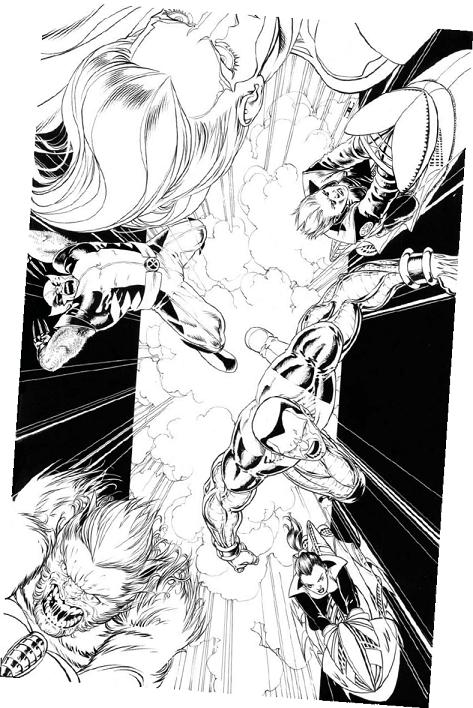
4 CAMERA ANGLES
There’s no camera in comics, but the analogy is useful when talking about framing compositions. The composition in a panel informs the reader where the “camera” is shooting from. So, if you’re looking at a picture of a woman sitting in a park, and you can see her whole body and many trees all around her, you can intuit the approximate distance that the camera is from the woman. In comics, for simplicity’s sake, we still refer to camera angles as though you were shooting a photograph rather than drawing a picture.
Throughout this chapter, we’ll discuss various camera angles, define them, talk about when to use them, and what eff ects they have on the reader. Camera angles are used to effectively and intentionally manipulate audiences.

Look Up!
John Cassaday’s cover to Astonishing X-Men looks straight up in the air as the characters come crashing down. This camera angle makes heroes look larger than life and villains look all the more sinister. Looking up exaggerates the illusion of power.
Astonishing X-Men #19, cover: ©2008 Marvel Characters, Inc. Used with permission.